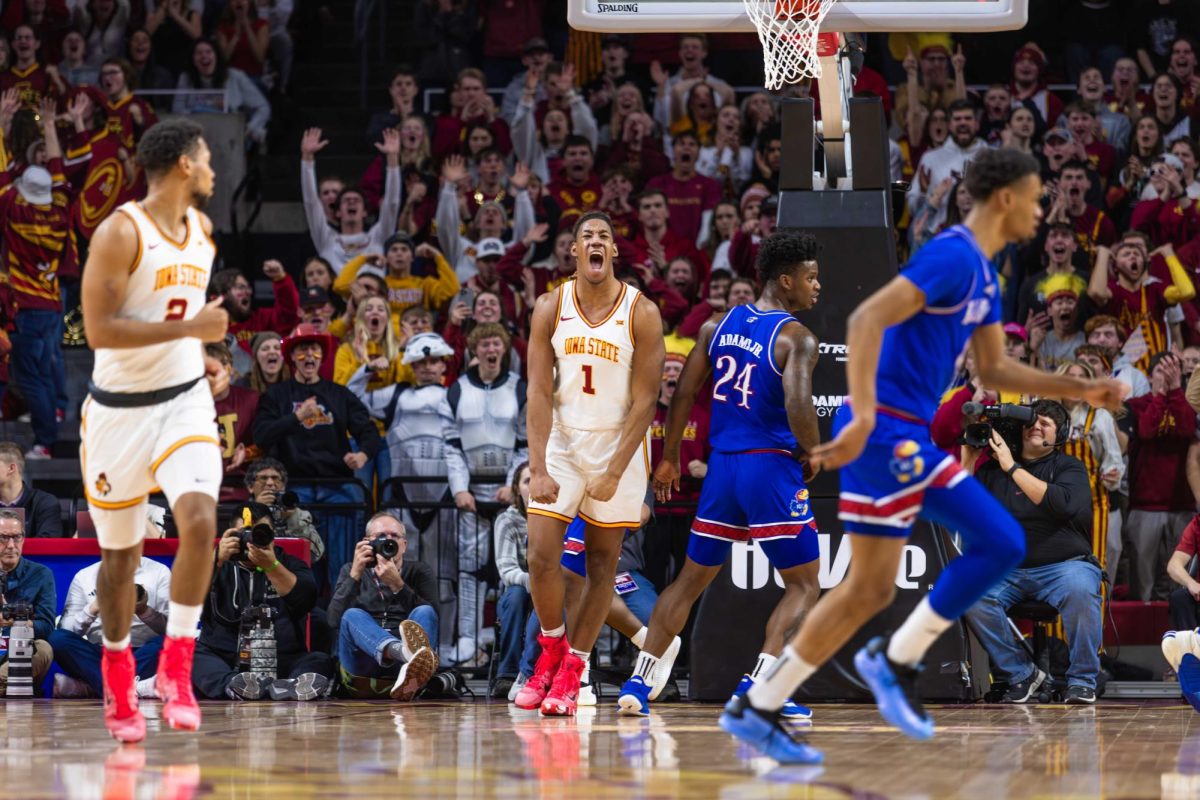Reaching for the stars
March 9, 2005
An ISU alumnus is helping launch the first U.S. space shuttle to take flight in more than two years.
NASA’s first shuttle flight since Columbia’s explosion in February 2003 is tentatively scheduled for May 15. Columbia’s destruction during re-entry to the atmosphere killed seven astronauts.
For the mission STS-114, the Space Shuttle Discovery crew is expected to fly to the International Space Station and carry out three spacewalks.
A spacewalk, or extravehicular activity, is any kind of activity an astronaut does outside of the spacecraft.
Helping to prepare the shuttle for flight is Kieth Johnson, a 1988 graduate of Iowa State.
Johnson works in the Mission Control Center at NASA’s Johnson Space Center in Houston. His role as an Extravehicular Activity Officer involves preparing and supporting the astronauts conducting the spacewalks.
For the upcoming mission, Johnson and his team have been working on new techniques that the astronauts can use in orbit if damage to the shuttle’s heat shield were to occur. He says he works with one team in training the shuttle crew and another team in preparing the repair techniques for the thermal protective system of the shuttle.
“We get them ready for those spacewalks and make sure they have the right tools and the right procedures to do what they need to do if they have to go outside to fix something,” he says.
Johnson’s duties at the Space Center don’t stop there, however. Some days, his main job is to work on training materials used to teach crew members how to do a repair of the thermal protective system. Other days, he trains crews at the Space Center’s neutral buoyancy laboratory. Here, the crew members put on spacesuits and get into a large swimming pool where they practice doing their spacewalks.
A third job takes Johnson to Mission Control, where he watches and monitors the crew on board the International Space Station.
Johnson says the seven astronauts who will be returning to flight in May will be doing maintenance and repair of Space Station as well as testing the new safety measures. They will also be taking a lot of “resupply” with them — things like food and supplies for the Space Station.
“One of the things about Space Station is that it’s been up there for many years, and it’s in kind of a harsh environment, so things kind of tend to break,” Johnson says.
Johnson says it was his diligent work in college and a reasonable GPA that helped him snag a NASA job.
“I think that what I had to do was stick with my curriculum when I was going through school, and once I got down here, I had to work hard and get up to speed on all the NASA acronyms,” he says.
The acronyms are the language of NASA, Johnson says.
“NASA itself is National Aeronautics and Space Administration, but just about every single thing that we interact with has a long string of names,” Johnson says.
“It becomes kind of a jargon that you have to get used to.”
Johnson says students wanting to pursue a career in aerospace engineering should stick with their goal because Iowa State tends to catch the eye of NASA.
“A lot of times recruiters come to Iowa State, and I think a lot of our engineering students are kind of highly sought after in the space program,” he says.
“There are a lot of Iowa State folks that work down here.”
Johnson says because every day at the Space Center is different, it keeps his job exciting.
“I like working closely with crew members and I like figuring out different ways to do EVAs, to do repairs,” he says. “I like interacting with people, and I like kind of sitting and thinking about different ways to do my job.”






